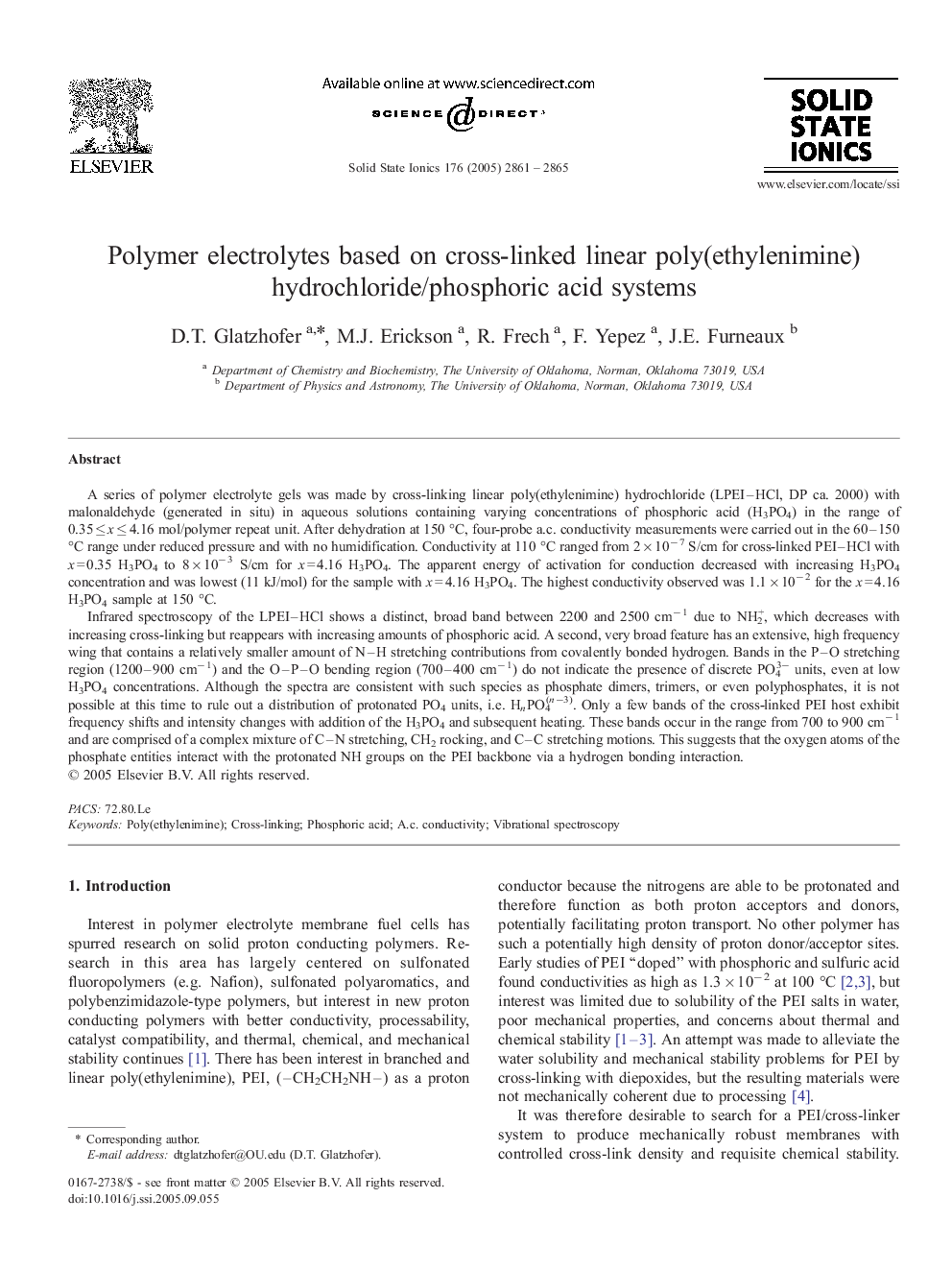| Article ID | Journal | Published Year | Pages | File Type |
|---|---|---|---|---|
| 1298477 | Solid State Ionics | 2005 | 5 Pages |
A series of polymer electrolyte gels was made by cross-linking linear poly(ethylenimine) hydrochloride (LPEI–HCl, DP ca. 2000) with malonaldehyde (generated in situ) in aqueous solutions containing varying concentrations of phosphoric acid (H3PO4) in the range of 0.35 ≤ x ≤ 4.16 mol/polymer repeat unit. After dehydration at 150 °C, four-probe a.c. conductivity measurements were carried out in the 60–150 °C range under reduced pressure and with no humidification. Conductivity at 110 °C ranged from 2 × 10− 7 S/cm for cross-linked PEI–HCl with x = 0.35 H3PO4 to 8 × 10− 3 S/cm for x = 4.16 H3PO4. The apparent energy of activation for conduction decreased with increasing H3PO4 concentration and was lowest (11 kJ/mol) for the sample with x = 4.16 H3PO4. The highest conductivity observed was 1.1 × 10− 2 for the x = 4.16 H3PO4 sample at 150 °C.Infrared spectroscopy of the LPEI–HCl shows a distinct, broad band between 2200 and 2500 cm− 1 due to NH2+, which decreases with increasing cross-linking but reappears with increasing amounts of phosphoric acid. A second, very broad feature has an extensive, high frequency wing that contains a relatively smaller amount of N–H stretching contributions from covalently bonded hydrogen. Bands in the P–O stretching region (1200–900 cm− 1) and the O–P–O bending region (700–400 cm− 1) do not indicate the presence of discrete PO43− units, even at low H3PO4 concentrations. Although the spectra are consistent with such species as phosphate dimers, trimers, or even polyphosphates, it is not possible at this time to rule out a distribution of protonated PO4 units, i.e. HnPO4(n−3). Only a few bands of the cross-linked PEI host exhibit frequency shifts and intensity changes with addition of the H3PO4 and subsequent heating. These bands occur in the range from 700 to 900 cm− 1 and are comprised of a complex mixture of C–N stretching, CH2 rocking, and C–C stretching motions. This suggests that the oxygen atoms of the phosphate entities interact with the protonated NH groups on the PEI backbone via a hydrogen bonding interaction.
